![]() Hello, gentle readers, and welcome to the RPG Reload, where sometimes we have to not only accept unhappy endings, but also no ending at all. Each week, we take a look at an RPG from the App Store’s past to see how it holds up in modern times. It’s a little bit of revisiting, a little bit of reflecting, and sometimes just a chance to take a deeper dive on a game than our reviews usually allow for. I generally try to choose a varied schedule from week to week, but if you feel like I’m missing something important, by all means, let me know. You can do that by commenting below, posting in the Official RPG Reload Club thread, or by tweeting me at @RPGReload. I plan my schedules pretty far in advance, so suggestions might take a while to show up, but they will go on the master list and appear sooner or later.
Hello, gentle readers, and welcome to the RPG Reload, where sometimes we have to not only accept unhappy endings, but also no ending at all. Each week, we take a look at an RPG from the App Store’s past to see how it holds up in modern times. It’s a little bit of revisiting, a little bit of reflecting, and sometimes just a chance to take a deeper dive on a game than our reviews usually allow for. I generally try to choose a varied schedule from week to week, but if you feel like I’m missing something important, by all means, let me know. You can do that by commenting below, posting in the Official RPG Reload Club thread, or by tweeting me at @RPGReload. I plan my schedules pretty far in advance, so suggestions might take a while to show up, but they will go on the master list and appear sooner or later.
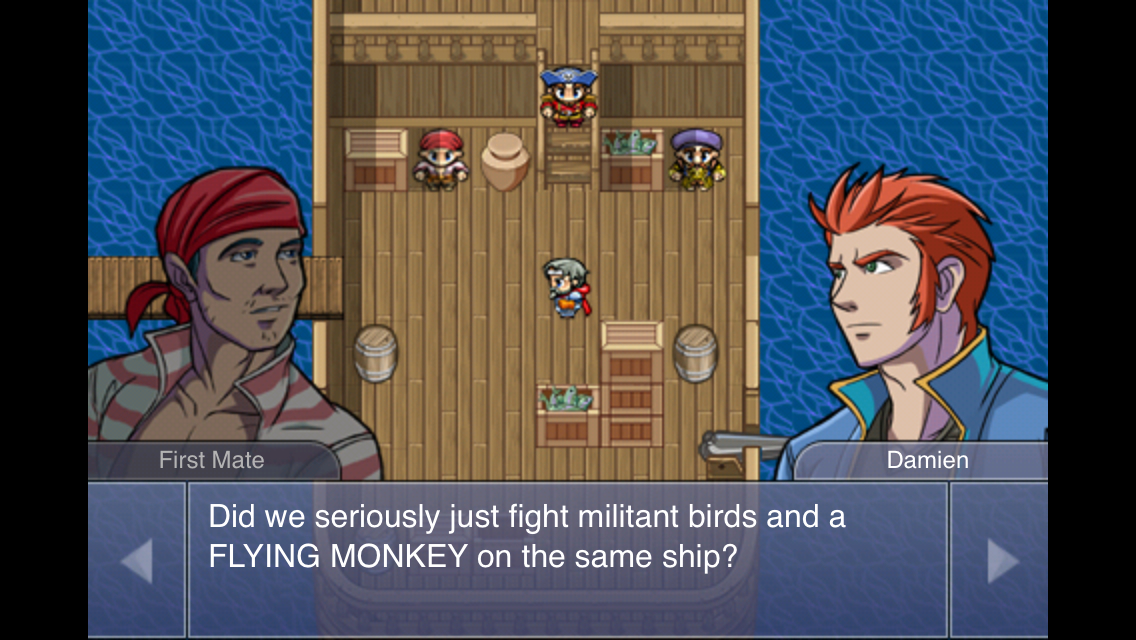
They can’t all have good endings, friends, and this week’s game seems to be an example of that. When SRRN Games’s Japanese-style RPG Ash ($0.99) released on iOS in late 2010, it met with a positive response from players and good sales. The developers soon found themselves courted by a famous publisher that was willing to put its clout behind the follow-up release. Sadly, what had seemed like a dream situation soon turned into a nightmare for the developers and players alike. Even the parts of Ash 2 that were released are no longer available for purchase, so all we’re left with for now is the first game, incomplete though its story may be.
Typically, when I write these articles, I reach out to the developer to see if I can get any interesting bits of information from them about the development of the game. It took a little while to hear back from someone at SRRN Games, but they’re still alive. They were quite willing to share a lot of information with me about the development of the game and some of the things that went on behind the scenes with the second installment. I’d like to thank both Christopher Hooe and Aujang Abadi for discussing the game with me.
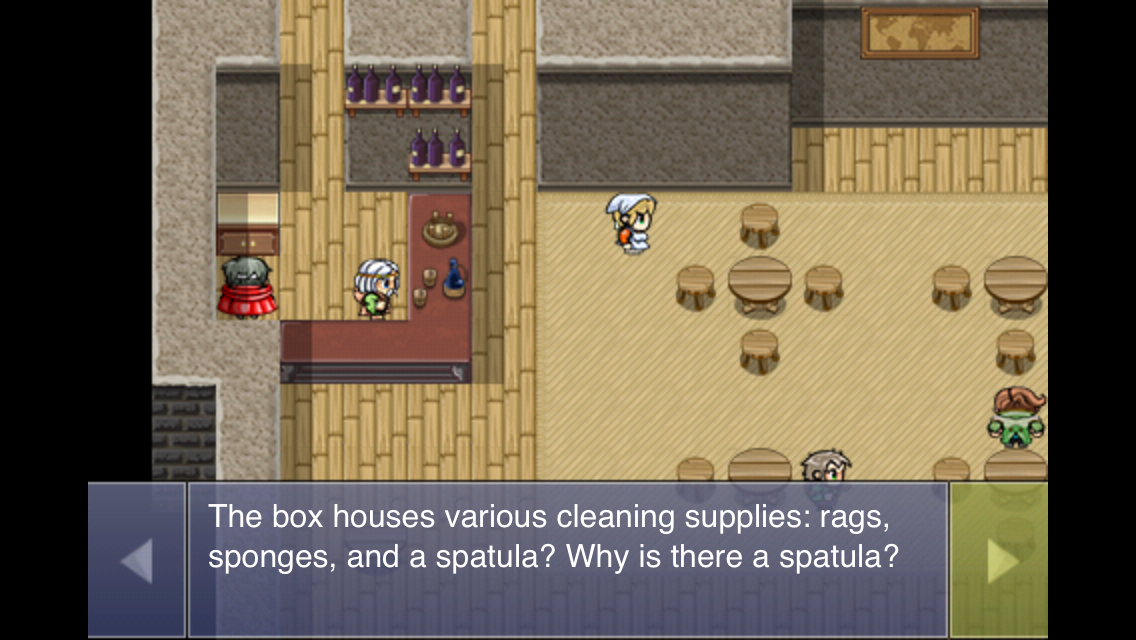
SRRN Games was founded in April 2009 in Richmond, Virginia by a handful of graduates from the University of Virginia. Ash was their first product, and work began on it before the initial group of four members had even finished school. Inspired by classic RPGs like Final Fantasy 4 ($14.99), they decided to create their own story-based RPG to fill a perceived gap in the App Store’s line-up. Although the game wasn’t made in RPG Maker, SRRN licensed a variety of art assets from Enterbrain’s popular game creation tool to fill in the gaps in theirs. The majority of the game’s development took place during the summer of 2010, with an eventual release in November of 2010. The game eventually made its way to Android after an engine jump to Unity, but that version has since been removed.
The founders of SRRN believed very strongly in the idea of games as art, and what that actually means. Given that, it’s a little funny that they went with a fairly standard Japanese-style RPG for their initial title, but they did try to spice things up with the story. The initial duo of Nicholas and Damien have a sort of father-son relationship that forms the emotional core of the game. Aujang Abadi, who wrote the bulk of the script, told me that the connection between the two characters was informed by his own love for his father. There’s a real sense of sincerity to the way they talk to each other, and I find it impressive how much character development the game manages at times with only a few words. The main plot was partly inspired by the movie Gladiator, with Nicholas being a sort of Russell Crowe stand-in. It gets a bit silly at times, nothing special for the genre, but in its serious moments, there’s a mature feeling to Ash that is often missing from the typical teen-focused JRPG.

On the other hand, the gameplay is a bit more routine. The developers were trying to make a game that played like the 16-bit RPGs they enjoyed when they were younger, so it’s not surprising that the game adopts many of the elements found in JRPGs from the early 90s, for good and for ill. The ways it separates itself from the games it pays homage to don’t work out so well, in my opinion. I often get the sense that the game is trying to stretch out its playtime with a limited number of assets, resulting in things like overly-long dungeons, dragged-out battles where participants whiff each other for zero damage half the time, and a whole lot of junk treasure.
There are random little items to be found by searching just about any object in the environment, and depending on how thorough you like to be, you might end up checking literally everything as you make your way through the world. That could be a good or bad thing, depending on how you like your games. The dungeons are massive and quite lengthy when compared to most 16-bit RPGs. That’s fine, of course, but a few of them feel like they last a little too long. There are lots of branches to go down, and the treasure waiting at the end of many of those branches is as likely to be a useless piece of joke gear as it is to be something worth equipping. There are no maps of any sort in the game, which occasionally proves to be an issue when traveling through the expansive overworld.
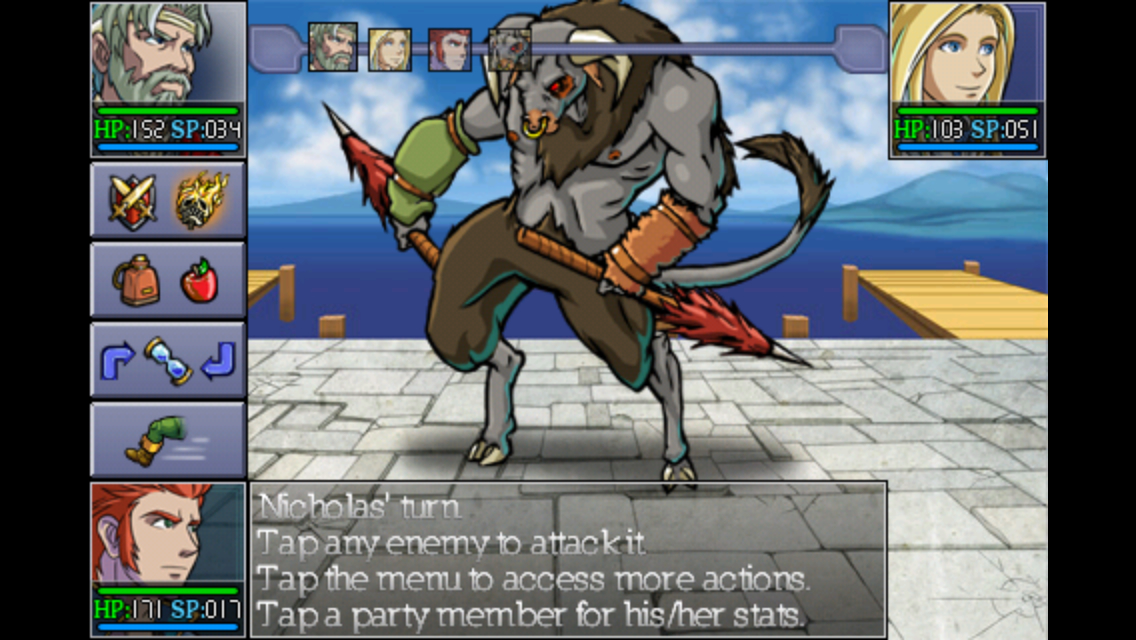
A lot of RPG fans dislike random encounters, but I’m actually okay with them. That said, if I’m going to get jumped by the enemy every few steps, I like the battles to be quick or meaningful. Either will do. For example, in the 16-bit Final Fantasy games, random encounters are essentially just there to keep you tapping the buttons en route to the boss, which provides a meaningful battle. As such, they’re generally over in a short span of time, and when they’re not, as with the irritating vampire bats in Final Fantasy 4, people get annoyed. One of Dragon Quest‘s biggest strengths is in ensuring that every battle, boss or otherwise, is either a proper challenge or resolved quickly. Ash‘s random battles, on the other hand, are drawn out affairs that nevertheless require little strategy in most cases. The game uses bosses, and they tend to be on the tougher side, so you’ll need to use proper strategies against them. Restoring the game’s equivalent to MP is fairly costly, so you’ll probably want to conserve your points until you reach the boss. That means you’ll generally just want to bash your way through with regular attacks in the battles leading up to the boss.
Here’s where the problem comes in. A significantly high amount of regular attacks in Ash do either little or no damage. This applies to the enemies as well as your players, so it’s at least fair. Basically, a battle participant has to hit their target, then has to deal enough damage to overcome the target’s defense. Depending on the weapon the character is using, the damage range can vary wildly, with the strongest weapons also potentially delivering the weakest attacks. Even the most basic of battles can become absurdly long affairs, with both sides whiffing or grazing each other over the course of several rounds. You can get around this by using special attacks, but because the dungeons are so long, the bosses are so tough, and restoring MP is so costly, it’s easier to deal with the monotony.

During the meaningful battles, things change. You have a lot of interesting abilities at your disposal for debuffing the enemy. You can leave them open to follow-up attacks, push back their turn by staggering them, reduce individual stats with directed attacks, and so on. The bosses tend to be pretty strong, too, making for enjoyably tense battles. Smaller dungeons, a few extra healing points, or even an item like the tents in Final Fantasy ($7.99) might have gone a long way towards making sure every battle could be as fun as the boss battles, or at least less time-consuming, but it is what it is. As it is, SRRN already reduced the game’s initial difficulty and added an easy mode in a couple of its updates, so you can certainly go around the situation if you want to.
To the game’s credit, it keeps a pretty good pace outside of the whole battle situation. Dungeons are long but eventful, and you’ve always got some sort of direction and purpose to the next leg of your journey. Virtually every town brings with it additional information on the backgrounds of the main characters, and the game is wise enough to give a generous portion of its run-time towards establishing the relationship between Nicholas and Damien before it starts introducing new characters into their dynamic. It’s a story worth experiencing in a game that, if nothing else, doesn’t do too much to get in the way of telling it properly. I should also say that while these articles are about looking at RPGs in the current context, when this game came out, there were at least 100 fewer JRPG-like games on the App Store. It’s a lot easier to love Ash‘s flawed, mostly-solid gameplay when the only competition is Vay ($5.99).

The game saw several updates after its release, most of which involved fixing bugs and addressing player requests. In addition to smoothing out the difficulty curve, the level cap was raised from 32 to 40, the art got a serious overhaul, a virtual directional pad was added, an easy difficulty setting was implemented, and the random encounter rate was turned down. With its last update being in April 2012, support for things like MFi controllers, iCloud, and larger iPhone screen sizes never came about. The game was planned to be updated with universal support, but that never happened, so you’ll have to deal with some crunchy pixels if you want to play it on your iPad. The still seems to run fine, though I found a couple of places where I could crash the game by poking around.
If you’re playing for the story, the bad news is that the game ends on a cliffhanger. The good news is that there was a sequel. The worse news is that the sequel was pulled from the App Store by its publisher, Konami, earlier this year. The worst news of all is that it was an episodic game, and due to the sudden closure of their mobile division in 2012, Konami apparently wouldn’t allow SRRN Games to release any episodes after the first two, in spite of two further episodes being finished and ready to go. There were two additional episodes planned, but SRRN stopped working on them when it became clear they wouldn’t be able to release them. So even if you bought the game and kept it on your device, the Ash story is far from complete, and will likely remain that way for the time being. Both of the SRRN developers I spoke to strongly indicated that they want to return to Ash someday to finish things off, but it wasn’t clear as to when or even where that would happen. Ash is still an enjoyable enough adventure to play through, but without a schedule for any sort of resolution, the game leaves a certain bitter taste in your mouth.
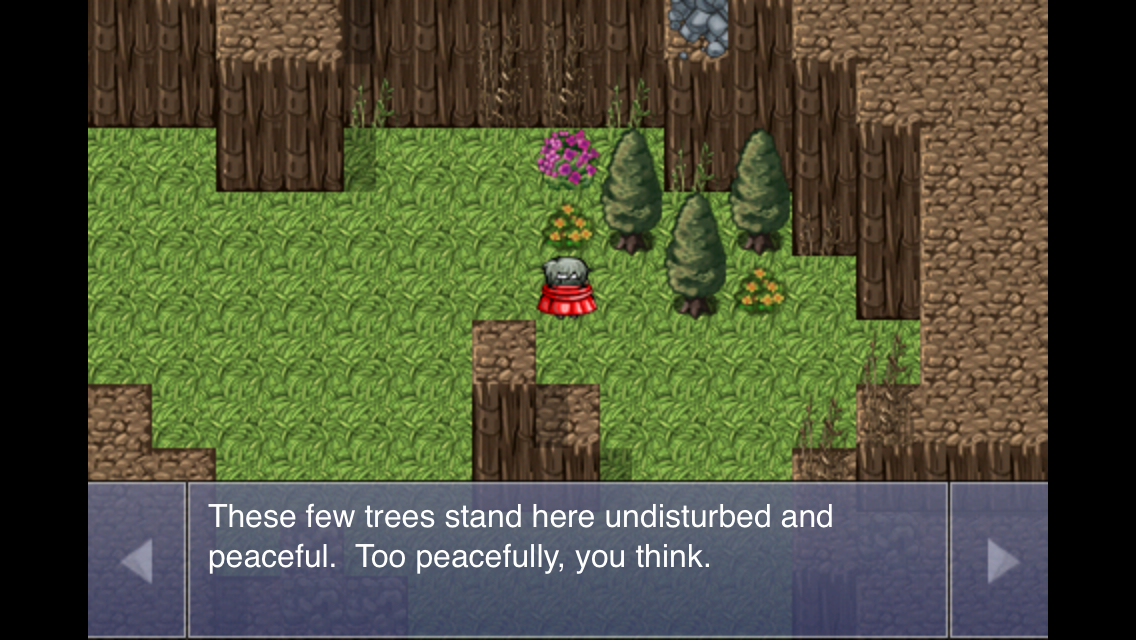
Let’s not end on that sour note, though, friends. Mr. Abadi was kind enough to share a couple of funny stories from behind the scenes that I’d like to leave here for posterity. Both stories involve enemy behaviors going wild. The first is when they were developing the enemy AI for battles. The enemy was supposed to target the biggest threat, and a few missteps ended with the AI deciding that threat was Damien every time. Well, fair enough, he’s usually the strongest. But the AI went farther than that, continuing its relentless assault even after Damien was dead. Yes, the monsters would ignore Nicholas and the others in favor of beating Damien’s corpse. The first attempt to fix it resulted in even defeated enemies continuing to attack poor old Damien.
The next amusing tale is about the Mountain Lion enemy. Those who have played the game know that he’s pretty tough for the area he appears in, but he used to be far more deadly. Stats for enemies were kept in a separate spreadsheet-based algorithm, and when the team made a few changes to the equations that draw from the spreadsheet, they inadvertently turned enemies with a high speed stat, like the Mountain Lion, into impossible-to-hit whirling dervishes of death. Luckily, this was caught before release thanks to the cries and pleas of the testers. Thanks, testers! You’re always saving us regular folk from deadly Mountain Lions.
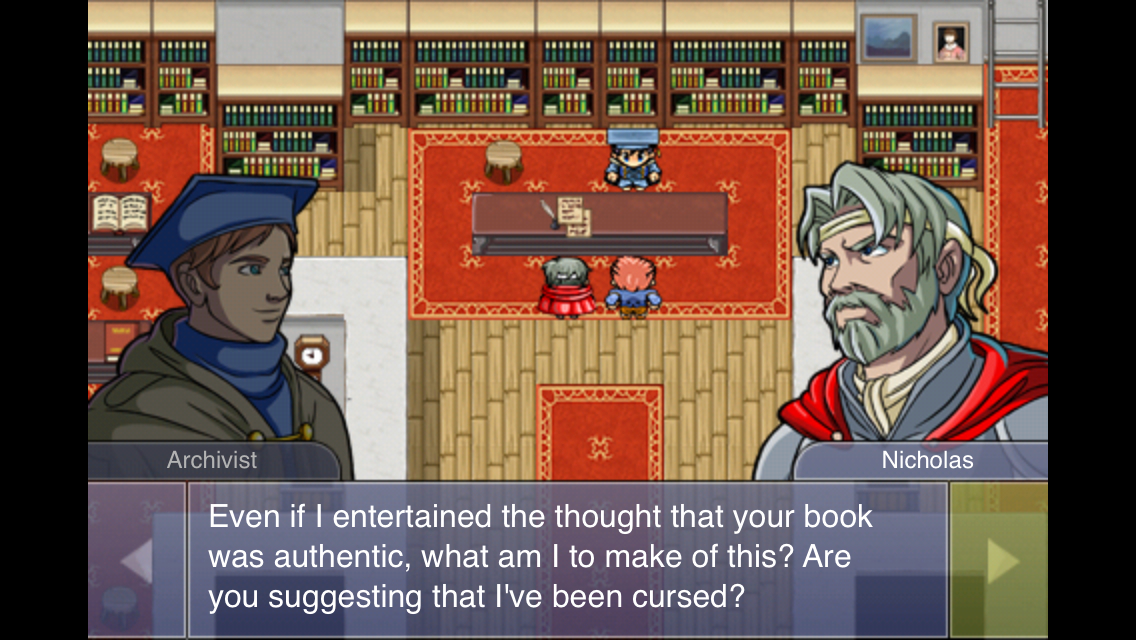
That’s all I’ve got to say about Ash. What do you all think about it? Can you still enjoy it even with the ending left open? Does it still stand out for you with so many other JPRG-style games released after it? I want to know, so please leave your comments below, post in the Official RPG Reload Club thread, or tweet me at @RPGReload. We’re also collecting questions for the RPG Reload Podcast. The next episode records later this month and will cover Wizardry, but you can ask about anything RPG-related you’d like. Those questions should be emailed to [email protected]. As for me, I’ll be back next week with another RPG from the mists of time. In the case of next week’s game, it perhaps should have stayed there. As always, thanks for reading!
Next Week’s Reload: Spectral Souls ($4.99)